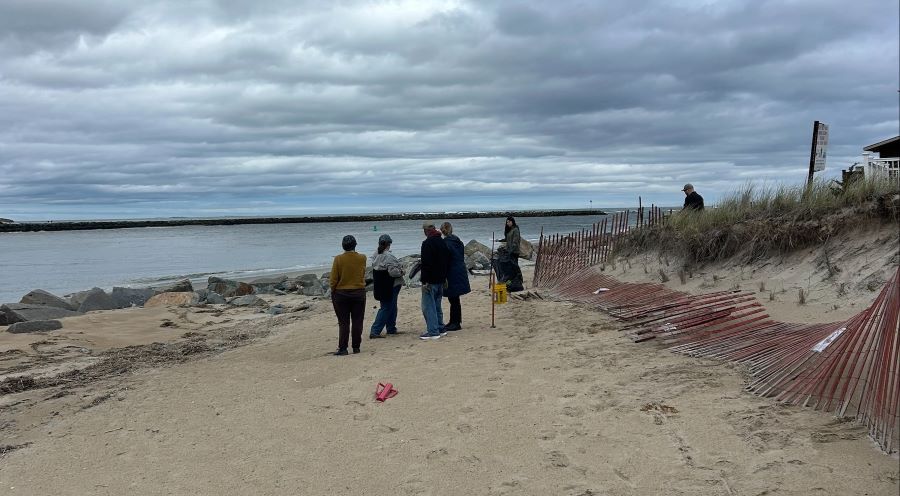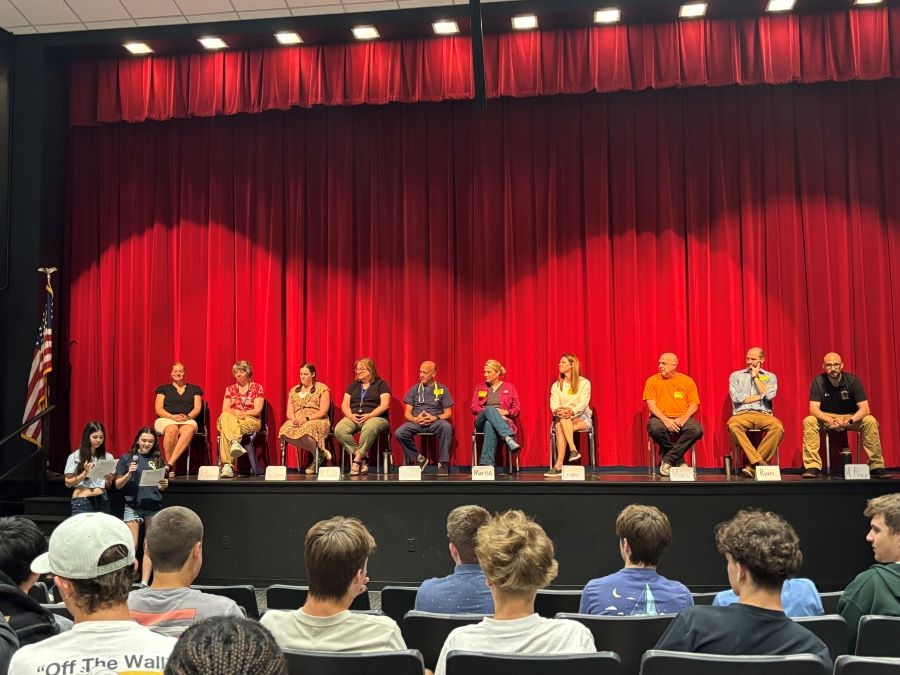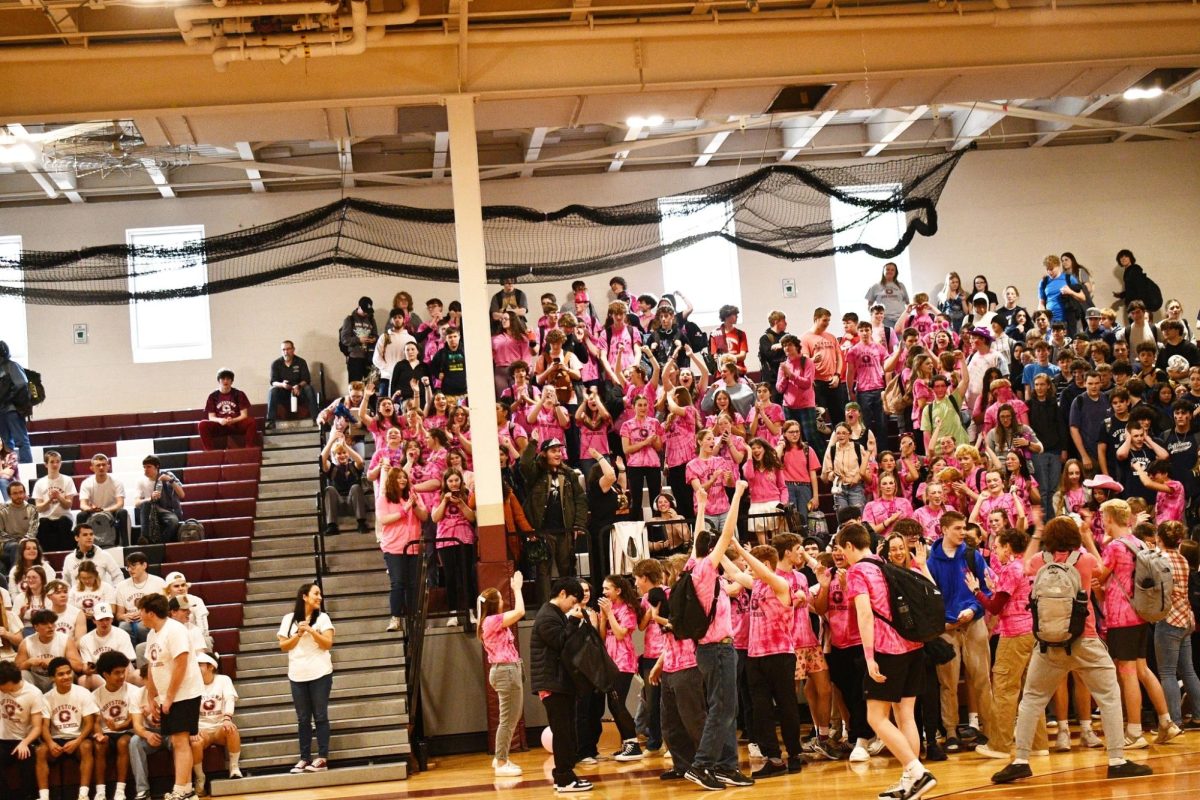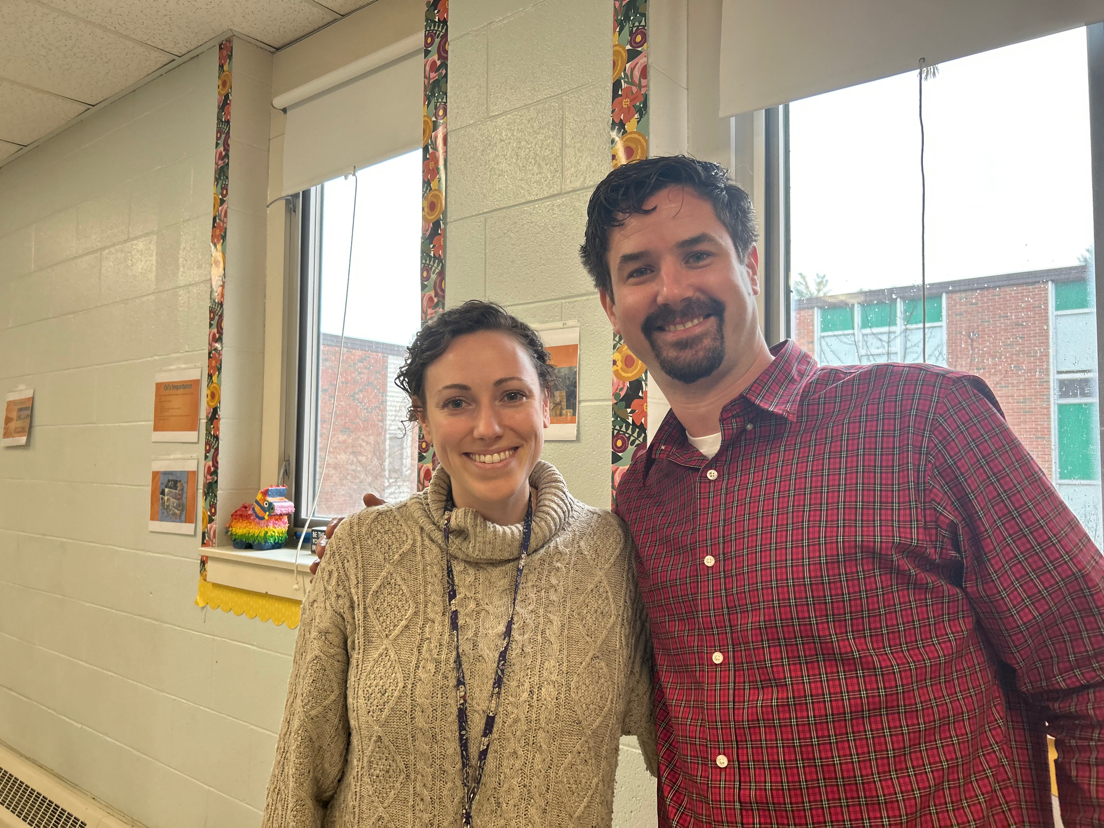On the 23rd of May, I volunteered with New Hampshire Sea Grant (NHSG) through Nature Groupie and Costello Wells (one of the volunteers and coordinators of this event) to help with a dune restoration project. The work lasted from 12:50pm to 4:06, essentially four hours.
What is the importance of dune restoration? Dunes are essential to ecosystems as it is a benefactor that provides coastal protection, habitats, and shoreline stability. Beachgrass ensures the dune’s stability by its rhizomes – the branch looking underground stem, grips and holds the sand which prevents erosion.

The project began with an introduction from Alyson Eberhardt, a Coastal Ecosystems Specialist at the University of New Hampshire (UNH) who taught the Citizen and Community Science course. Eberhardt detailed the significance of dunes and emphasized the necessity of restoration efforts. A deteriorating dune in Seabrook Beach, positioned near a residential area, struggles to provide coastal protection due to its gradual decline in size. This project aims to relocate beachgrass from Hampton State Park to reinforce the dune and reestablish its role in its ecosystem.
Eberhardt explained how to effectively remove the beachgrass from the ground and instructed us to put it in a designated bucket. She laid out an estimated quota for each person to reach which was about 2,000 plants each. Along with my father and I, there were eight other volunteers/coworkers. Three individuals had prior connections to UNH and NHSG, while others were affiliated with organizations such as the Blue Ocean Society. Four members of the group were Seabrook community residents passionate about preserving the dune due to its role in protecting local homes. Ben Ritt, a coastal resilience coordinator for Hampton, also contributed to the initiative, providing insight into drone-based surveying and environmental monitoring.
Guidance on removing beachgrass efficiently was provided by Eberhardt, instructing volunteers to place harvested plants into designated buckets. An estimated goal of 2,000 plants per participant was established. Alongside this effort, eight additional volunteers participated.
Digging out the beachgrass was a simple process, however, someone elucidated that “Beachgrass is a plant that withstand hurricanes and harsh environments, though if you so much as step on the plant, it dies immediately”. Being conscious of your feet in a beachgrass populous area greatly reduces your efficiency when digging out the plants. Naturally, you stick the shovel underneath the plants you are getting and would count the bulbous part of the stemming grass. Once we reached a sum of approximately 16,000, then the group carpooled and drove to Seabrook across the bridge.

Upon arrival, preparations for planting commenced. Ritt assisted with replacing old signage that cautioned residents about the protected dune area, as we were zip-tying, the others began to move the fence that enclosed the dune in an isolated zone outwards to give it more room. That process took quite a while and after it was done planting began.
The vegetation was placed in garbage bags and pairs were given buckets full of tools. Each bucket contained soil, handheld shovels, and fertilizers. The planting process involved digging deep holes to ensure stability against strong winds. Moisture-retaining soil was then added, followed by a small amount of fertilizer, before the sand was replaced to secure the plant in place.
Over time, the newly planted beachgrass will contribute to the dune’s growth, reinforcing its protective role in the coastal ecosystem. Continued efforts in dune restoration will help strengthen its presence and resilience.











